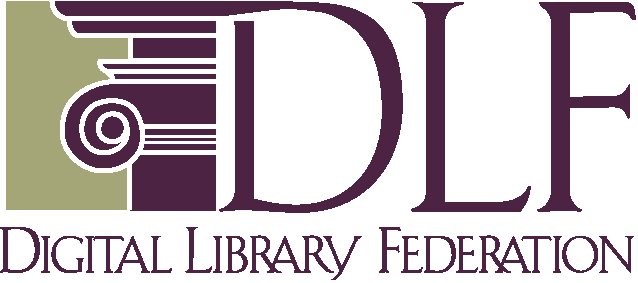
From the Closet to the Center:
|
That was then.
Now, the librarians who once experimented with solitary digital-access projects at the library's periphery are increasingly building systems for managing online information at its core. Increasing chunks of library budgets are spent on digitizing collections, acquiring such computer-accessible research materials as e-journals, and maintaining online public access catalogs. Moreover, librarians are applying electronic-information technologies to the management of their holdings in all formats - books, manuscripts, and other traditional materials as well as digital collections. And by relating rather than separating traditional and electronic resources, they are developing more efficient and economical services for the library as a whole.
This was the message from the latest forum organized by the Digital Library Federation (DLF), which operates under the administrative umbrella of the Council on Library and Information Resources (CLIR). The DLF's 26 member-institutions and some allied organizations sent 113 representatives to San Francisco on May 4 through 6 to catch up on the latest developments in this fast-moving field through reports, workshops, and professional interaction. This was the fourth forum since the DLF's creation in 1995.
"I'm detecting a shift in emphasis to infrastructure rather than experimentation," DLF Director Daniel Greenstein declared at a mid-meeting plenary session. Reviewing a recent survey of DLF members-major university research libraries plus the New York Public Library and the Library of Congress-Greenstein reported the existence now of "an enormous core investment" in digital library activity. Such activity, he said, is "becoming pervasive" within libraries, and is "drawing on resources beyond them" from academic computing centers, information technology departments, and university presses. In developing online collections and services, Greenstein continued, the field's leaders no longer are proceeding "project by project" but are focusing on building systems to provide a "production capacity for all we may want to do."
One manifestation of this "shift" is increased attention to the preservation of information already digitized so that scholars, teachers, and students can be assured of continuing access long-term. To take but one example from the forum, two sessions gave participants an opportunity to hear about and then discuss a program, funded by the Mellon Foundation, in which seven libraries are working simultaneously on different approaches to the preservation of scholarly journals published electronically.
Among troublesome questions identified by session leaders were these. Assuming that libraries can permanently archive e-journals, at what point and under what rules should publishers turn over e-journal content to libraries? What conditions would "trigger" the library's right to provide access in place of the publisher? And how much access, with what functionality, for whom? Also how much content would be preserved-advertisements and lists of editors as well as articles? Who would audit or certify the authenticity of electronic copies? And for all of this, "who pays?" With such questions in mind, the participating projects hope to come up with guidance for creating collaborative agreements as well as technological infrastructures.
The growing maturity of digital library work showed also in presentations from librarians who are now paying more attention to whether users really need and can conveniently use collections made electronically accessible. For example, reports came from the California Digital Library on usability testing techniques, from Cornell on a study of how students use a digital-image database, and from the University of Washington on how "Web stats and common sense" can be employed to meet expectations of users "instead of forcing them to meet yours."
Participants discussed needs for "putting out more PR" about libraries' online offerings, for helping patrons develop electronic research strategies and search skills, for relating digitized material more closely to instructional requirements, and for developing "personalized library services." Costs of meeting user needs also came under scrutiny. Participants examined the pros and cons of creating consortia for the acquisition of e-material, and considered reducing costly duplication by creating registries to describe what already is digitized.
Other sessions focused on requirements for metadata, standardization, and better tools for the management of digital resources. Fortunately, "best practices" have become multiple, participants were told; institutions may now need help to choose among acceptable options. The use of partnerships at this stage of digital library development also was described. In addition to the collaboration of presses and libraries in the previously mentioned program for preserving electronic journals, IT professionals are joining librarians at Cornell to preserve collections of digital data assembled by researchers themselves. Museums, libraries, and archives in Illinois and Connecticut are collaboratively digitizing material for school curricula. And a task force of librarians, archivists, and scholars is preparing guidance on the preservation needs in the digital era of material in traditional formats such as photos, audiotapes, and books.
Just how far digital developments have come may be indicated even by the latter group's title - the "Task Force on the Artifact in Library Collections"!
More on the DLF Forum is available at https://www.diglib.org/.